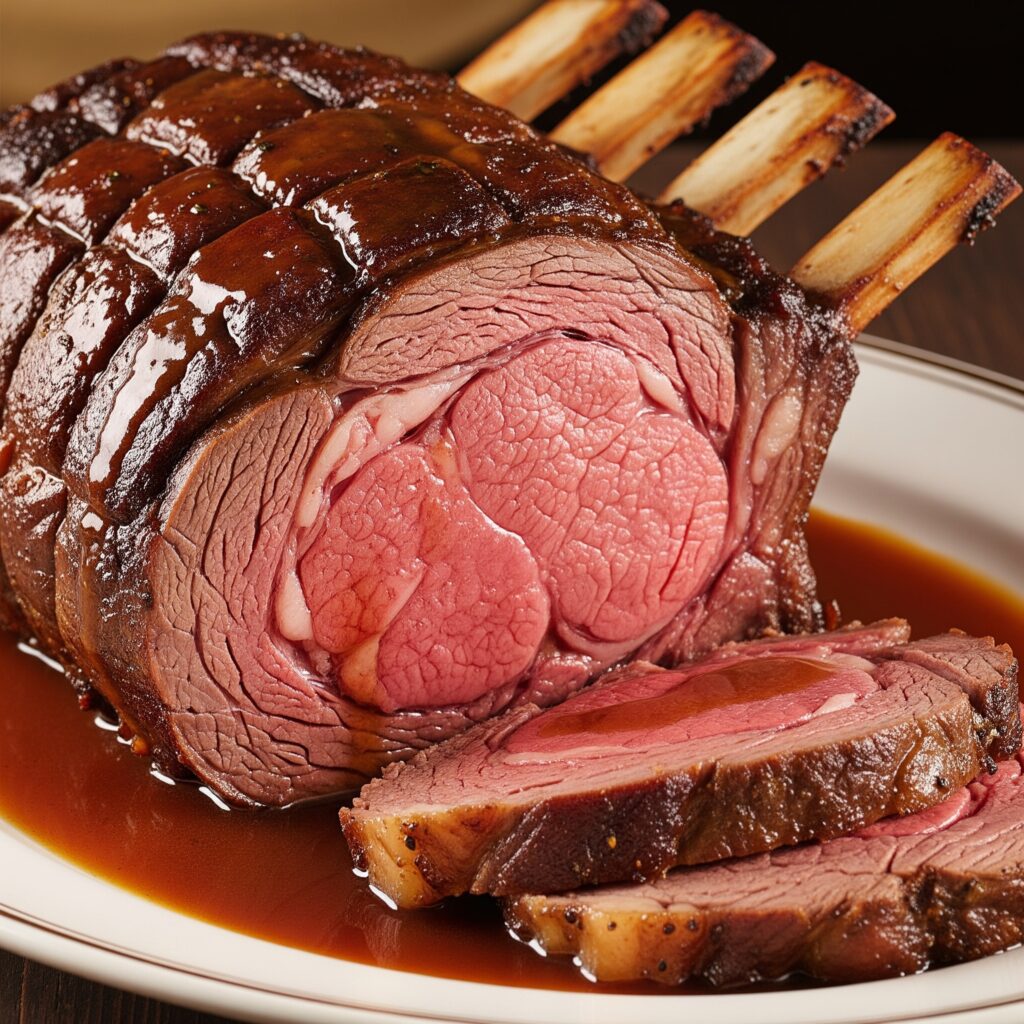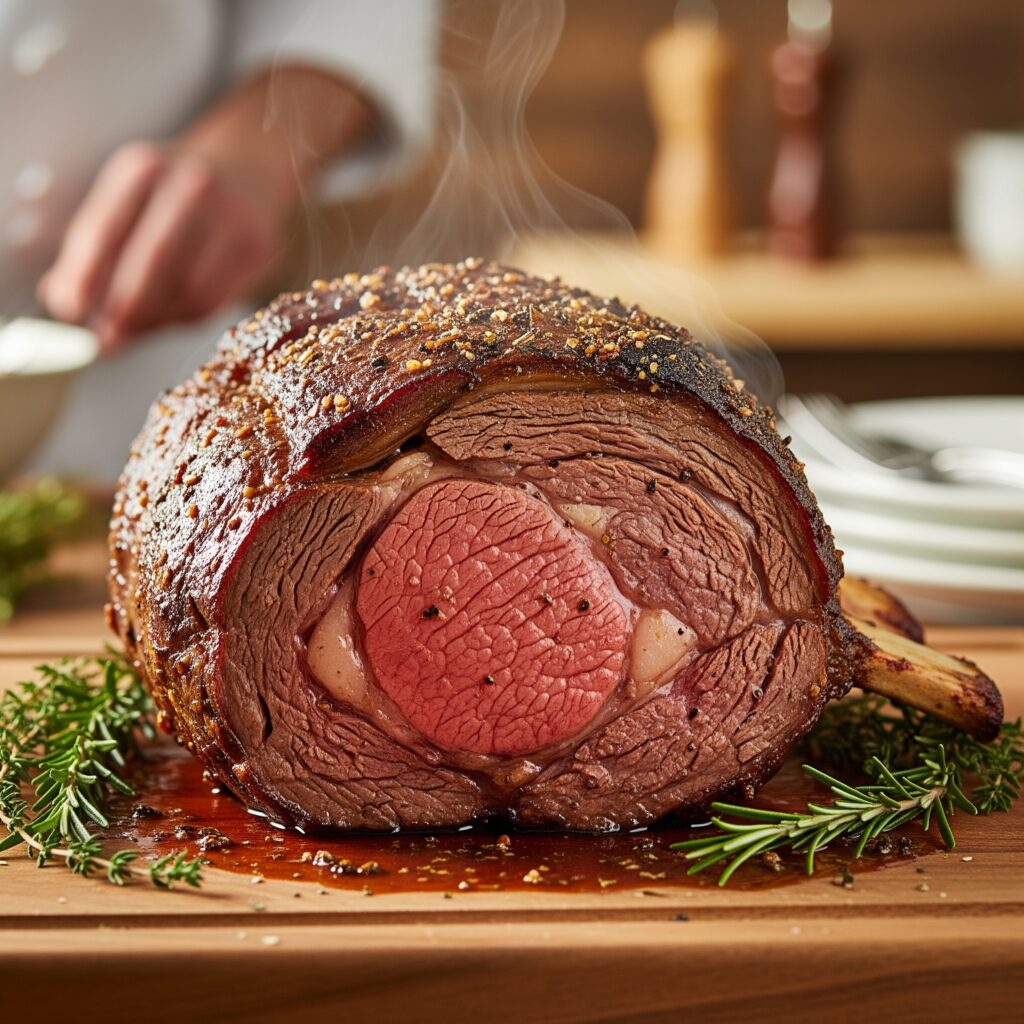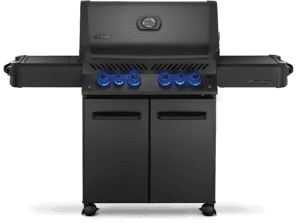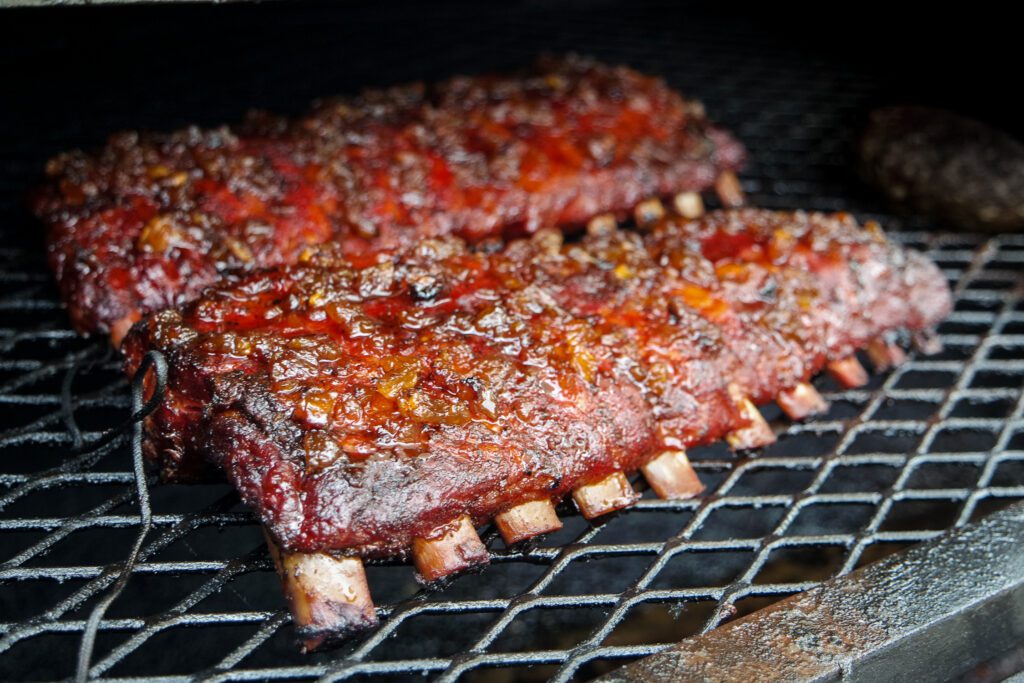How Long to Cook Prime Rib at 250°F

Looking to elevate your prime rib game? Forget the traditional high-temperature roasting! Ever wondered how long to cook prime rib at 250? Well, get ready for a mouthwatering revelation. Slow cooking is key for succulent prime rib. Cooking at a lower temperature allows the meat to cook evenly while retaining its natural juices. Say goodbye to dry and tough cuts of meat!
Cooking prime rib at 250°F unlocks a world of flavor and tenderness that will have your taste buds dancing with joy. The secret lies in this delicious alternative method that keeps your roast juicy and full of flavor from edge to center. Prepare yourself for perfectly cooked prime rib like you’ve never experienced before.
So, let’s dive into the tantalizing secrets behind cooking prime rib at 250°F and discover why it’s become the go-to method for meat lovers everywhere. Get ready to savor every bite!
Factors Affecting Cooking Time and Calculation Methods
Understanding how size and weight impact cooking time
The size and weight of the cut play a crucial role in determining the cooking time. Larger prime ribs will naturally require more time to cook compared to smaller ones. The thickness of the meat also affects the overall cooking process. Thicker cuts will take longer to reach the desired doneness level.
To estimate the cooking time accurately, consider using a general guideline of 15-20 minutes per pound for bone-in prime rib and 12-15 minutes per pound for boneless prime rib. However, keep in mind that these are just rough estimates, and other factors can influence the actual timing.
Calculating cooking time based on desired doneness level
Determining how long to cook your prime rib at 250 degrees Fahrenheit depends on your preferred level of doneness. Here’s a breakdown of approximate cooking times based on internal temperature:
- Rare: Cook until the internal temperature reaches 120-125°F (49-52°C). This typically takes about 20 minutes per pound.
- Medium Rare: Aim for an internal temperature of 130-135°F (54-57°C). Plan for approximately 25 minutes per pound.
- Medium: Cook until the internal temperature reaches around 140-145°F (60-63°C). This usually requires about 30 minutes per pound.
- Well Done: For those who prefer their prime rib well done, aim for an internal temperature of 150°F (66°C) or higher. Allow roughly 35 minutes per pound.
Remember that these timings are approximate and should be used as a starting point. It’s essential to use a reliable meat thermometer to ensure accurate results.
Considering bone-in or boneless prime rib for accurate timing
Whether you choose bone-in or boneless prime rib can affect your overall cooking time. Bone-in cuts take slightly longer to cook due to the heat distribution around the bone. The bone acts as an insulator, slowing down the cooking process.
On the other hand, boneless prime rib tends to cook more evenly and may require less time in the oven. When calculating your cooking time, be sure to account for this difference based on whether you have a bone-in or boneless roast.
Exploring different calculation methods for precise results
While general guidelines can provide a good starting point for estimating cooking times, there are alternative calculation methods that can help you achieve even more precise results:
- Reverse Sear: This method involves slow-roasting the prime rib at a low temperature (250°F) until it reaches an internal temperature of about 10-15°F below your desired doneness level. Then, increase the oven temperature to achieve a beautiful crust on the outside.
- Resting Time: After removing the prime rib from the oven, allow it to rest for 15-20 minutes before carving. During this resting period, residual heat continues to cook the meat while ensuring juiciness and tenderness.
- Use an Instant-Read Thermometer: For accurate and real-time monitoring of your prime rib’s internal temperature, invest in a reliable instant-read thermometer. This allows you to check doneness without opening the oven frequently, preserving heat and reducing cooking time.
Achieving the Ideal Doneness for Prime Rib

Determining the perfect internal temperature for rare, medium, or well-done prime rib can be a challenging task. However, with a few tips and tricks, you can achieve a juicy and flavorful prime rib with ideal doneness every time.
To start off, it’s important to understand the concept of doneness. The USDA recommends cooking prime rib to an internal temperature of 145°F (63°C) for medium-rare, 160°F (71°C) for medium, and 170°F (77°C) for well-done. These temperatures ensure food safety while preserving the tenderness and succulence of the meat.
One key tip to achieving a perfectly cooked prime rib is to use a meat thermometer. This handy tool allows you to monitor the internal temperature accurately and avoid overcooking or undercooking your roast. Insert the thermometer into the thickest part of the meat without touching bone or fat for an accurate reading.
Another crucial factor in achieving ideal doneness is understanding carryover cooking and resting time. Carryover cooking refers to the phenomenon where meat continues to cook even after being removed from heat due to residual heat within the roast. Therefore, it’s essential to account for this additional cooking time when determining your desired level of doneness.
After removing your prime rib from the oven at its target temperature, allow it to rest for about 15-20 minutes before carving. This resting period allows the juices within the meat to redistribute evenly throughout, resulting in a more tender and flavorful roast.
To ensure a nice crust on your prime rib while maintaining optimal doneness inside, consider searing it at high heat before roasting. Searing helps develop that delicious outer crust while sealing in juices that enhance flavor.
For those aiming for perfection in achieving consistent doneness every time they cook prime rib, here are some additional tips:
- Use a meat rub or marinade to add flavor and enhance the crust.
- Always start with a high-quality prime rib roast, preferably USDA Prime grade for the best results.
- Preheat your oven to 250°F (121°C) before cooking the roast.
- Calculate the cooking time based on the weight of your prime rib, allowing approximately 15 minutes per pound for medium-rare doneness.
Seasoning Techniques for Perfectly Cooked Prime Rib
Seasoning plays a crucial role in bringing out the mouthwatering flavors of prime rib. Whether you prefer classic seasoning options or want to experiment with unique spice blends, mastering the art of proper seasoning techniques will elevate your prime rib to new heights.
Classic Seasoning Options
Sometimes simple is best. Classic seasonings like salt, pepper, and herbs can enhance the natural flavors of the meat without overpowering them. Here are some classic options to consider:
- Kosher salt: Sprinkle kosher salt generously over the surface of the prime rib before cooking. The coarse texture helps create a delicious crust while allowing the meat’s juices to remain intact.
- Black pepper: Freshly ground black pepper adds a subtle kick and complements the rich flavors of prime rib. Apply it evenly over the meat for a balanced flavor profile.
- Herbs: Experiment with different herbs like rosemary, thyme, or garlic powder to infuse aromatic notes into your prime rib. Rub them onto the surface or mix them with other seasonings for an extra layer of flavor.
Marinades and Rubs
If you’re looking to take your prime rib to another level, marinades and rubs can add depth and complexity to its taste. Consider these options:
- Dry brine: Applying a dry brine involves rubbing a mixture of salt and other seasonings onto the meat’s surface and letting it rest in the refrigerator overnight. This technique enhances flavor while also tenderizing the meat.
- Infused oils: Create unique flavor profiles by infusing oils with spices or herbs such as chili flakes, rosemary sprigs, or garlic cloves. Brushing these infused oils onto your prime rib before cooking will impart delightful flavors.
Proper Seasoning Techniques
To ensure even distribution of seasonings and optimal flavor throughout your prime rib, follow these tips:
- Room temperature: Bring your prime rib to room temperature before seasoning. This allows the meat to cook more evenly.
- Pat dry: Before applying any seasonings, pat the surface of the prime rib dry with paper towels. This step helps the seasonings adhere better.
- Even coating: Whether using classic options or marinades, make sure to coat the entire surface of the meat evenly for consistent flavor in every bite.
- Massage it in: Use your hands to gently massage the seasonings into the meat, ensuring they penetrate deeply and enhance its natural flavors.
Elevating Your Prime Rib
For those who want to venture beyond traditional seasonings, unique spice blends and infused oils can take your prime rib to new heights:
- Spice blends: Experiment with pre-made spice blends or create your own by combining various spices like cumin, paprika, coriander, or mustard powder. These blends can add a burst of flavor that sets your prime rib apart.
- Infused oils: Explore different infused oils such as truffle oil, chili-infused oil, or herb-infused oil for a gourmet touch. Brushing these oils onto your cooked prime rib just before serving will tantalize your taste buds.
Serving Suggestions and Temperature Guidelines
Pairing Suggestions for Sides
Choosing the right sides is crucial to enhance its rich flavors. To complement the succulent meat, consider these delectable pairing options:
- Creamy horseradish sauce: The tangy kick of horseradish cuts through the richness of prime rib, adding a delightful zing to each bite.
- Roasted garlic mashed potatoes: The creamy texture and aromatic flavor of roasted garlic perfectly balance the robustness of prime rib.
- Grilled asparagus spears: Lightly charred asparagus adds a fresh and vibrant element to your meal, providing a contrasting crunch.
Recommended Serving Temperatures
Achieving the perfect doneness when cooking prime rib is essential to ensure a mouthwatering dining experience. While personal preferences may vary, here are some general guidelines for serving temperatures:
- Rare: For those who enjoy a juicy and tender center with a deep pink hue, aim for an internal temperature of 120°F (49°C).
- Medium-rare: This popular choice offers a slightly more cooked exterior while maintaining a pink center. Cook until the internal temperature reaches around 130°F (54°C).
- Medium: If you prefer your prime rib with a hint of pink throughout, cook it until the internal temperature reaches approximately 140°F (60°C).
- Medium-well: For those who prefer less pink in their meat but still desire some juiciness, cook until the internal temperature reaches about 150°F (66°C).
To achieve accurate results when measuring the internal temperature of your prime rib, use a reliable kitchen thermometer. Insert it into the thickest part of the roast without touching any bones for an accurate reading.
Tips on Carving Techniques
Carving your beautifully cooked prime rib requires finesse to showcase its tenderness and flavor. Follow these tips for an impressive presentation:
- Rest the meat: Allow your prime rib to rest for at least 15 minutes before carving. This ensures that the juices redistribute, resulting in a more succulent and evenly cooked roast.
- Locate the bones: Identify the bones running along one side of the roast. Use them as a guide when slicing.
- Slice against the grain: Cut thin slices against the grain of the meat for maximum tenderness.
- Serve with drippings: Pour any accumulated juices and drippings over your carved prime rib to enhance its flavor further.
Presenting Your Prime Rib
To make your prime rib visually appealing, consider these presentation ideas:
- Garnish with fresh herbs: Sprinkle some chopped parsley or rosemary on top of your sliced prime rib for an added touch of freshness.
- Arrange on a platter: Place the beautifully carved prime rib slices on a large serving platter, allowing guests to help themselves.
- Add colorful sides: Surround your prime rib with vibrant roasted vegetables or colorful salads to create an enticing visual contrast.
Bone-In vs. Boneless: Does it Affect Cooking Time?
Understanding how bones can affect heat distribution during cooking
Whether you choose a bone-in or boneless cut can have an impact on the overall cooking time and the final result. One important factor to consider is how bones can affect heat distribution during the cooking process.
Bones act as conductors of heat, helping to distribute it evenly throughout the meat. When you cook a bone-in prime rib, the bones help to retain and distribute heat more effectively, resulting in a more even cooking experience. This means that the meat near the bones will cook at a similar rate to the rest of the roast, ensuring consistent doneness throughout.
Comparing cooking times between bone-in and boneless cuts
The presence of bones in a prime rib can slightly increase the overall cooking time compared to boneless cuts. The additional time required is due to the fact that bones take longer to reach their desired internal temperature than meat alone. However, this difference in cooking time is generally minimal.
For example, if you were to cook a bone-in prime rib at 250 degrees Fahrenheit (121 degrees Celsius), you might need approximately 30 minutes per pound (454 grams) for medium-rare doneness. On the other hand, a boneless cut cooked at the same temperature would require slightly less time—around 25-28 minutes per pound (454 grams). While these differences may seem insignificant, they can add up when preparing larger roasts.
Factors to consider when choosing between bone-in or boneless
When deciding between a bone-in or boneless prime rib, several factors come into play beyond just cooking time:
- Flavor: Many people believe that bones add extra flavor during cooking. The marrow inside the bones can infuse richness into the surrounding meat as it melts during roasting.
- Presentation: A bone-in prime rib can make for an impressive presentation at the dining table. The bones act as a natural handle, making it easier to carve and serve the roast.
- Ease of carving: Boneless prime rib is generally easier to carve since there are no bones to navigate around. This can be particularly advantageous if you’re not confident in your carving skills.
Debunking common misconceptions about cooking times
There are some common misconceptions when it comes to cooking times for bone-in and boneless prime rib cuts:
- Myth: Bone-in cuts always take longer to cook than boneless ones.
- Fact: While bone-in cuts may require slightly more time due to heat distribution, the difference is generally minimal and depends on factors such as size and thickness.
- Myth: Removing the bones from a bone-in cut will significantly reduce cooking time.
- Fact: Removing the bones may shorten cooking time slightly, but it won’t have a dramatic impact. The primary factor determining cooking time is the weight of the meat itself.
Smoking Prime Rib: Step-by-Step Guide
Step-by-step instructions for smoking prime rib at 250°F
Smoking a prime rib at 250°F can result in a tender and flavorful piece of meat that will leave your taste buds craving for more. Follow these simple steps to achieve the perfect smoked prime rib:
- Prepare the rib roast: Start by selecting a high-quality prime rib from the butcher. Make sure it has a good amount of marbling, as this will add flavor and juiciness to the final result. Remove any excess fat from the surface of the meat, leaving just enough to keep it moist during cooking.
- Seasoning: Apply a generous amount of seasoning rub all over the prime rib. You can use a pre-made rub or create your own blend using ingredients like salt, pepper, garlic powder, paprika, and herbs like rosemary or thyme.
- Preheat your smoker: Preheat your smoker to 250°F and ensure you have enough wood chips or chunks for smoking. Popular wood flavors for smoking prime rib include hickory, oak, cherry, or mesquite. Each wood imparts its unique smoky profile to the meat.
- Place the prime rib in the smoker: Once your smoker has reached the desired temperature and is producing smoke, place the seasoned prime rib on the grates with indirect heat. Position it bone-side down if applicable.
- Monitor internal temperature: Insert a meat thermometer into the thickest part of the roast without touching any bones for an accurate reading. The ideal internal temperature for medium-rare prime rib is around 135°F (57°C). For medium doneness, aim for 145°F (63°C).
- Maintain consistent temperature: Throughout the smoking process, it’s crucial to maintain a steady temperature of 250°F inside your smoker. Fluctuations in temperature can affect cooking time and the overall tenderness of the meat.
- Baste occasionally: To keep the prime rib moist and add extra flavor, baste it with a mixture of melted butter, herbs, and garlic every hour or so. This will help enhance the delectable meat as it absorbs the aromatic flavors.
- Achieving a perfect smoke ring: The smoke ring is a pinkish layer that forms beneath the surface of smoked meats. To achieve a desirable smoke ring on your prime rib, ensure you have enough wood chips producing smoke throughout the cooking process.
Exploring different wood flavors to enhance the smoky profile
One of the joys of smoking prime rib is experimenting with various wood flavors to elevate its smoky profile. Here are some popular options to consider:
- Hickory: Known for its strong and robust flavor, hickory pairs well with beef and adds an intense smokiness.
- Oak: Provides a milder smoky taste compared to hickory but still enhances the natural flavors of prime rib.
- Cherry: Imparts a slightly sweet and fruity aroma that complements the richness of prime rib.
- Mesquite: Offers a bold and distinctive flavor that can be overpowering if used excessively. It is best suited for those who prefer an intense smoky taste.
Remember to use these woods in moderation, as too much smoke can overpower the delicate taste of prime rib.
Conclusion
Mastering prime rib at 250°F requires careful consideration of various factors that affect cooking time and achieving the ideal doneness. By understanding these factors and implementing the right techniques, you can ensure a perfectly cooked prime rib that will impress your guests.
Factors such as the size and thickness of the prime rib, starting temperature, and desired level of doneness play a crucial role in determining the cooking time. Calculating the cooking time accurately based on these factors is essential to achieve a tender and juicy prime rib.
To achieve the ideal doneness, it is important to use a meat thermometer to monitor the internal temperature. This ensures that you cook your prime rib to perfection, whether you prefer rare, medium-rare, or well-done.
Seasoning techniques also contribute significantly to the flavor profile of your prime rib. From simple salt and pepper rubs to more complex herb and spice blends, experimenting with different seasonings can elevate your dish to new heights.
When serving prime rib, it is recommended to let it rest for a few minutes before carving. This allows the juices to redistribute throughout the meat for maximum flavor. Following temperature guidelines for serving ensures that your prime rib remains warm without overcooking.
The choice between bone-in and boneless prime rib does not significantly affect cooking time. However, bone-in cuts tend to have slightly more flavor due to marrow release during cooking.
For those who enjoy smoky flavors, smoking prime rib can be an excellent option. Following a step-by-step guide ensures that you infuse your meat with rich smokiness while maintaining its tenderness.
In conclusion, mastering prime rib at 250°F involves considering various factors such as size, thickness, seasoning techniques, resting time, and desired doneness level. By applying these tips and techniques effectively, you can create a mouthwatering dish that will impress both family and friends alike.
Now it’s time for you to put your newfound knowledge into practice and create a memorable prime rib experience. So go ahead, fire up the grill or preheat that oven, and let the delicious journey begin!
FAQs
Q: Can I cook prime rib at a higher temperature for faster cooking?
A: While it is possible to cook prime rib at higher temperatures for faster cooking, it may result in a less tender and juicy end result. Cooking at 250°F allows for slower, more even cooking, resulting in a superior texture and flavor.
Q: How long should I let my prime rib rest before carving?
A: It is recommended to let your prime rib rest for about 15-20 minutes before carving. This resting period allows the juices to redistribute throughout the meat, ensuring a moist and flavorful final product.
Q: What is the ideal internal temperature for medium-rare prime rib?
A: For medium-rare doneness, aim for an internal temperature of around 135°F (57°C). However, personal preferences may vary, so adjust accordingly based on your desired level of doneness.
Q: Can I use marinades instead of dry rubs for seasoning my prime rib?
A: While marinades can add flavor to meats, they are not typically used when preparing prime rib. Dry rubs or simple seasoning with salt and pepper are more commonly preferred to allow the natural flavors of the meat to shine through.
Q: Should I remove the bones from bone-in prime rib before cooking?
A: It is generally recommended to keep the bones intact while cooking bone-in prime rib. The bones help enhance flavor during cooking and can be easily removed after carving if desired.


0 Comments